Seed technologists benefit from production training
By Adefris Teklewold and Dagne Wegary
Developing Ethiopia’s seed sector can help bring quality protein maize (QPM) to people at risk of protein deficiencies, participants in a seed production training course learned last month. To enhance the skills of public and private seed company agronomists and seed quality inspectors, the Nutritious Maize for Ethiopia (NuME) project hosted a QPM seed production training course from 30 October to 1 November. With funding from the Department of Foreign Affairs, Trade and Development (DFATD) of the Canadian International Development Agency (CIDA), NuME aims to bring QPM to farmers in the major maize-growing areas of Ethiopia. Seed sector capacity building is a key component of the project, along with advancing and sharing QPM technology.
Fikre Markos, plant health and regulatory director of the Federal Ministry of Agriculture, said the seed system in Ethiopia remains underdeveloped. “The country’s seed companies are inefficient due to capacity limitations and can benefit from training for seed technologists,” he said. Nearly 40 participants – including five women – attended the training. Seed agronomists represented seven private seed companies, four public seed enterprises, and one farmer cooperative union, while seed quality inspectors were drawn from the Federal Ministry of Agriculture, three regional bureaus of agriculture and three zonal seed quality laboratories. Four agricultural research institutes producing breeder, pre-basic and basic QPM seed varieties were also represented.
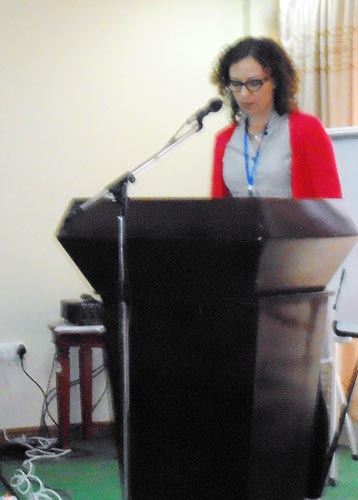
Jennifer Bloom, second secretary for food security and agricultural growth for DFATD, opened the workshop and commended CIMMYT for bringing relevant partners to help implement NuME.
NuME Project Leader Adefris Teklewold said the project is aligned with the government of Ethiopia’s growth and transformation plan and millennium development goals. The NuME project focuses on gender parity in achieving these goals. Women are targeted in the project’s education and communication efforts to identify ways they can benefit from QPM. “The project addresses the issues of food and nutritional security and also focuses on promoting and ensuring gender balance and opportunities for women,” Teklewold said. “Through disseminating QPM technology, the project aims to support stakeholders’ efforts to challenge intra-household power imbalances.”
Presentation topics included clarifying the difference between QPM and non-QPM germplasm; QPM variety development and promotion; identification and maintenance of true-to-type varieties and parental lines; effective planning of QPM seed production; field management of seed production; post-harvest handling and marketing and principles of seed quality control and inspection. QPM contains higher levels of essential amino acids than normal maize. The QPM trait is recessive, meaning seed production requires careful quality control so the trait is not lost.
The trainers–experts drawn from CIMMYT, the Agricultural Transformation Agency of Ethiopia, the Ethiopian Ministry of Agriculture, Ethiopian Institute of Agricultural Research, Sasakawa Global 2000 and Ethiopian seed Enterprise – brought a wealth of information and knowledge to improve the skills of seed technologist and quality inspectors.
Participants said the training would benefit their personal careers as well as help them meet NuME’s high-quality seed production objectives. The training not only enhanced their knowledge of QPM seed technology but gave them insight into its role in food and nutrition security, they said.
Markos presented certificates to the participants and closed the training by saying the private sector is crucial for varietal development, seed production and dissemination and asked participants to use the training to improve QPM seed production and quality control in Ethiopia.
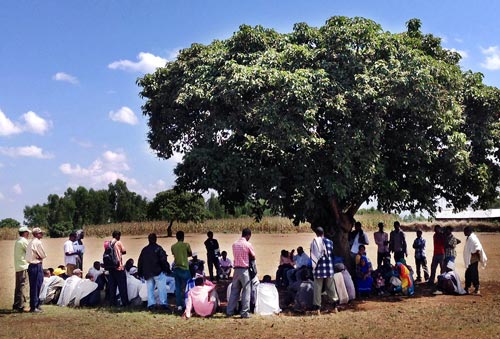
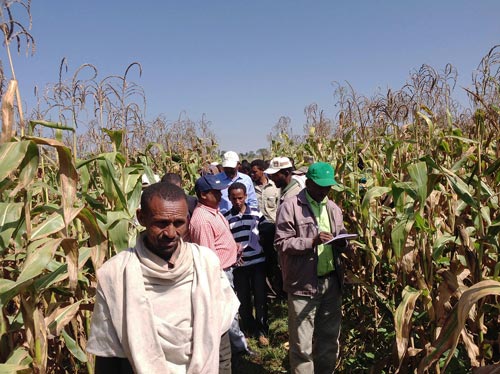
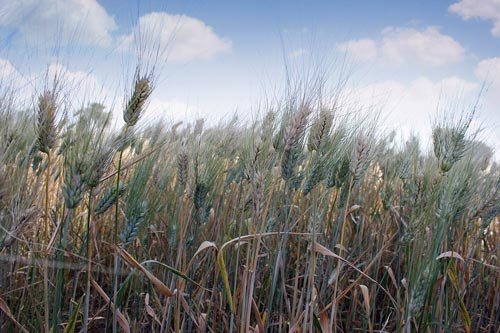
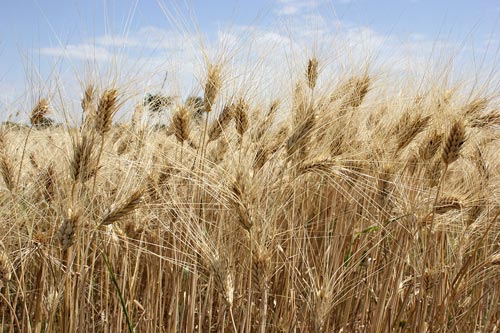
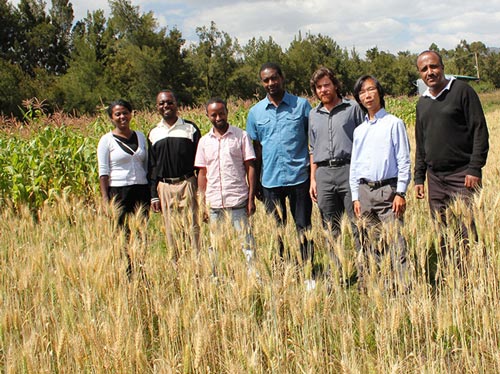
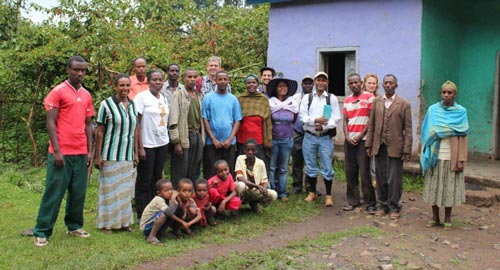
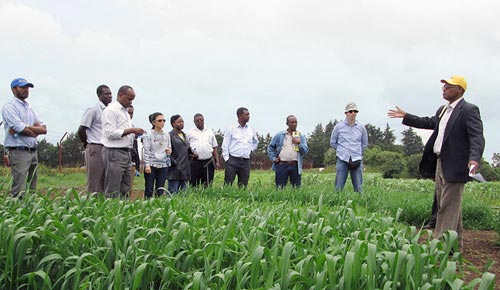
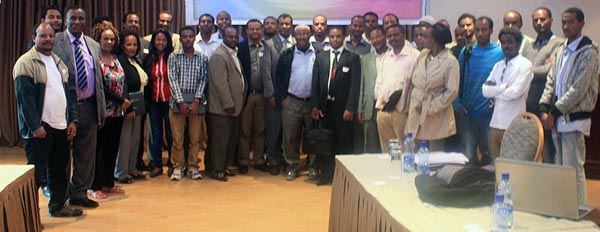
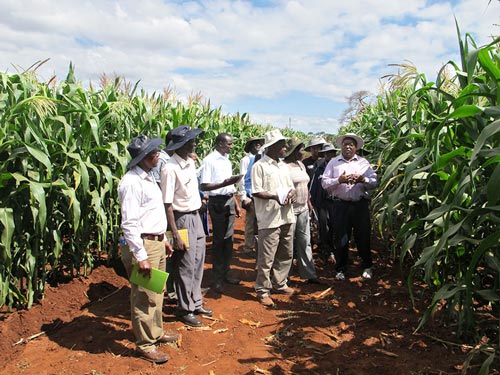 “The trip was an eye opener for me. We have no mass rearing facility in Ethiopia; neither do we practice artificial infestation of stem borers. We only undertake natural infestation for our trials, which does not give uniform infestation, leading us to wrong conclusions,” said Midekssa Ardessa from Bako Agricultural Research Center at the Ethiopian Institute of Agricultural Research (EIAR), who visited CIMMYT-Kenya during 21-27 July 2013 with a team of scientists from Ethiopia, Uganda, Tanzania, and Mozambique, to gain hands-on experience in breeding insect-resistant maize. “We are now very knowledgeable on mass rearing of stem borers and on running an insectary after our visit and practical sessions at the CIMMYT Katumani Insectary,” added Abiy Dibaba from EIAR’s Melkasa Agricultural Research Center. “At the CIMMYT Kiboko Postharvest Lab, we learned a lot about maize weevils and the larger grain borer, and how to screen maize for resistance against these postharvest pests.”
“The trip was an eye opener for me. We have no mass rearing facility in Ethiopia; neither do we practice artificial infestation of stem borers. We only undertake natural infestation for our trials, which does not give uniform infestation, leading us to wrong conclusions,” said Midekssa Ardessa from Bako Agricultural Research Center at the Ethiopian Institute of Agricultural Research (EIAR), who visited CIMMYT-Kenya during 21-27 July 2013 with a team of scientists from Ethiopia, Uganda, Tanzania, and Mozambique, to gain hands-on experience in breeding insect-resistant maize. “We are now very knowledgeable on mass rearing of stem borers and on running an insectary after our visit and practical sessions at the CIMMYT Katumani Insectary,” added Abiy Dibaba from EIAR’s Melkasa Agricultural Research Center. “At the CIMMYT Kiboko Postharvest Lab, we learned a lot about maize weevils and the larger grain borer, and how to screen maize for resistance against these postharvest pests.”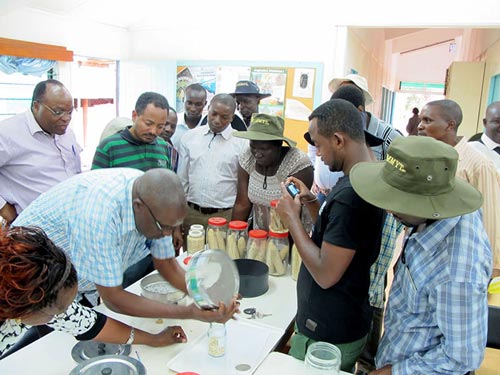 The annual IRMA project’s program has trained more than 50 scientists since its inception in 2009. “Most of us talk very easily and confidently about insect rearing. However, it is quite a challenge when we engage in the practical aspects,” said Tefera. “What we have exposed you to is just a tip of the iceberg in the business of mass rearing of insects. There is still a lot to learn, much of it by yourself as you engage in the practical aspects of it.” The participants appreciated the effort taken by the organizers. One of them, Egas Nhamucho of IIAM, said: “Infestation of maize with stem borers was a real learning point for me, a real delicate task of picking out very tiny 10 insect larvae, ensuring that you do not pierce and kill them with the camel brush, and carefully and strategically placing them on each maize plant. The practical sessions really made me appreciate some of the tasks we have always taken for granted.”
The annual IRMA project’s program has trained more than 50 scientists since its inception in 2009. “Most of us talk very easily and confidently about insect rearing. However, it is quite a challenge when we engage in the practical aspects,” said Tefera. “What we have exposed you to is just a tip of the iceberg in the business of mass rearing of insects. There is still a lot to learn, much of it by yourself as you engage in the practical aspects of it.” The participants appreciated the effort taken by the organizers. One of them, Egas Nhamucho of IIAM, said: “Infestation of maize with stem borers was a real learning point for me, a real delicate task of picking out very tiny 10 insect larvae, ensuring that you do not pierce and kill them with the camel brush, and carefully and strategically placing them on each maize plant. The practical sessions really made me appreciate some of the tasks we have always taken for granted.”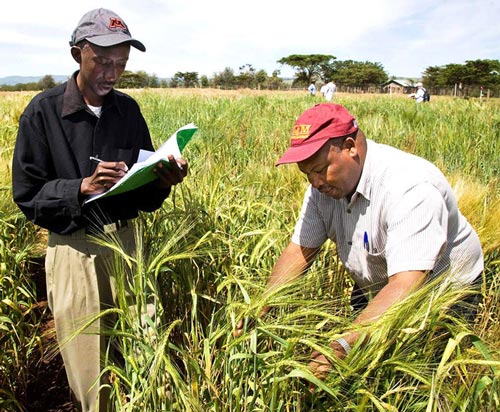 Wheat was not a traditional staple in much of Africa, but urbanization, a growing middle class, and changing lifestyles are driving a rapid increase in demand for it. The urban and rural poor in Africa eat wheat, as do more prosperous consumers, and demand is burgeoning with rising populations. But leading wheat producing countries in Africa grow enough to meet at most 40% of their demand, so the continent imports more than US$ 15 billion-worth of grain each year.
Wheat was not a traditional staple in much of Africa, but urbanization, a growing middle class, and changing lifestyles are driving a rapid increase in demand for it. The urban and rural poor in Africa eat wheat, as do more prosperous consumers, and demand is burgeoning with rising populations. But leading wheat producing countries in Africa grow enough to meet at most 40% of their demand, so the continent imports more than US$ 15 billion-worth of grain each year.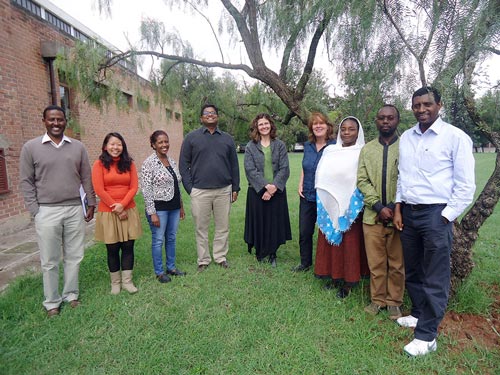 Exploring the potential for integrating gender at a range of scales in the work of the CIMMYT-
Exploring the potential for integrating gender at a range of scales in the work of the CIMMYT-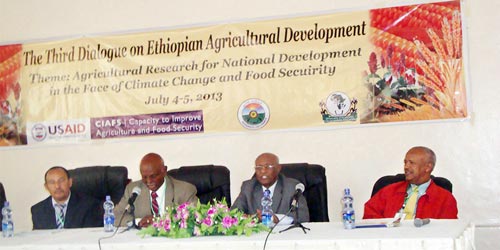 The third Dialogue on Ethiopian Agricultural Development: Agricultural Research for National Development in the Face of Climate Change and Food Security was held during 4-5 July 2013 at the Haramaya University of Agriculture, Haramaya Harar. The Dialogue aimed to provide a platform for discussion on agricultural research for development and transformation of the sector for food security in Ethiopia.
The third Dialogue on Ethiopian Agricultural Development: Agricultural Research for National Development in the Face of Climate Change and Food Security was held during 4-5 July 2013 at the Haramaya University of Agriculture, Haramaya Harar. The Dialogue aimed to provide a platform for discussion on agricultural research for development and transformation of the sector for food security in Ethiopia.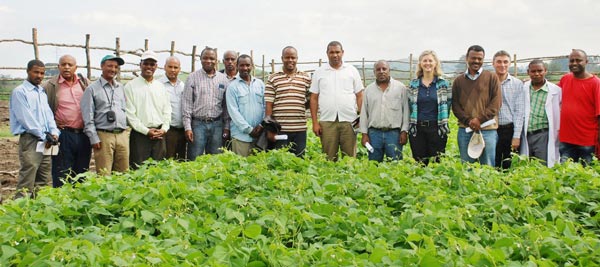 Myths and cultural practices can block farmers’ acceptance of a new technology, particularly the principles of reduced tillage, residue retention, and cropping rotations that underlie conservation agriculture. This was one observation in a recent visit to farmers in four districts in Ethiopia by Australian International Food Security Centre (
Myths and cultural practices can block farmers’ acceptance of a new technology, particularly the principles of reduced tillage, residue retention, and cropping rotations that underlie conservation agriculture. This was one observation in a recent visit to farmers in four districts in Ethiopia by Australian International Food Security Centre (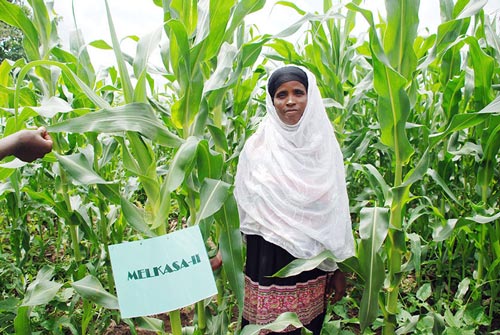
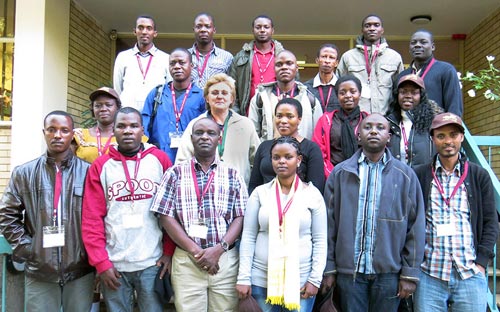 Fifteen young scientists from
Fifteen young scientists from 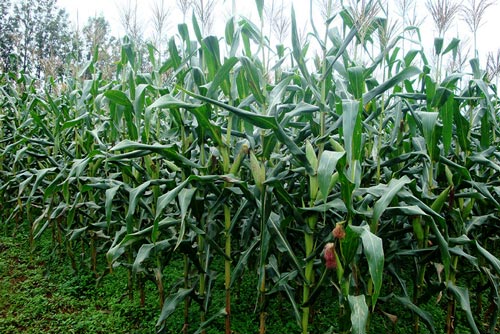
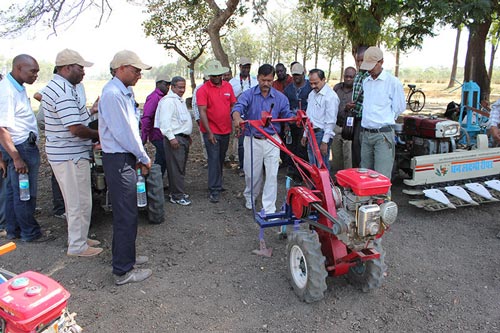 From 29 April to 10 May, 16 agricultural engineers, agronomists, machinery importers, and machinery manufacturers from Ethiopia, Kenya, Tanzania, and Zimbabwe took part in a study tour in India organized by CIMMYT, the Indian Council of Agricultural Research (
From 29 April to 10 May, 16 agricultural engineers, agronomists, machinery importers, and machinery manufacturers from Ethiopia, Kenya, Tanzania, and Zimbabwe took part in a study tour in India organized by CIMMYT, the Indian Council of Agricultural Research (